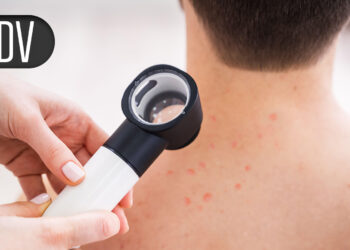TOPLINE:
Individuals conceived through assisted reproductive technologies (ART) had significantly lower cardiorespiratory fitness than those conceived spontaneously, with no difference in muscle strength, a cohort study showed.
METHODOLOGY:
- Researchers conducted a single-centre observational cohort study in Germany between 2021 and 2022, including individuals aged 4-26 years without known cardiovascular conditions, who were conceived using ART (n = 67) or spontaneously (age- and sex-matched control individuals, n = 86).
- They analysed anthropometric measurements, diet quality, levels of physical activity, and sedentary behaviour. The analysis was adjusted for age, birth weight, and gestational age.
- Cardiorespiratory fitness was evaluated using the 6-minute walking test (6MWT) and 20-meter shuttle run test (20mSRT). The 6MWT distance, number of 20mSRT laps, estimated maximal oxygen uptake (VO2max), systolic blood pressure (SBP), and pulse rate recovery were analysed.
- Muscle strength was evaluated using hand grip strength (HGS) measurements.
TAKEAWAY:
- Adherence to the Mediterranean diet, levels of physical activity, and sedentary behaviour were not significantly different between groups.
- The ART group showed significantly lower 6MWT distance (P = .02), number of 20mSRT laps (P < .001), estimated VO2max (P = .02), and pulse rate recovery at 5 (P = .01) and 10 (P = .02) minutes than the control group.
- In the adjusted analysis, the ART group showed significantly lower number of 20mSRT laps (P = .02), estimated VO2max (P = .04), pulse rate recovery at 5 minutes (P = .03), and SBP (P = .03) than the control group.
- Maximal HGS showed no significant differences between groups.
IN PRACTICE:
“This study indicates a significantly lower CRF [cardiorespiratory fitness] in ART participants compared to spontaneously conceived controls. Significant differences in muscle strength were not demonstrated between ART participants and controls,” the authors wrote.
“Future research should consider CPET [cardiopulmonary exercise testing] for direct VO2max measurement. Larger multi-center follow-up studies are required for precise cardiorespiratory risk stratification of the ART cohort,” they added.
SOURCE:
This study was led by Marie Kramer and Pengzhu Li, University Hospital, LMU Munich, Munich, Germany. It was published online on June 21 in the European Journal of Pediatrics.
LIMITATIONS:
This non-blinded, multi-investigator study was vulnerable to participation and assessor biases and inter-observer variability. Its wide age range and inclusion of adverse perinatal conditions may have affected the results, and key confounders such as ART modality, parental health, and socioeconomic status were not accounted for. Comorbidities among ART offspring may also have affected the fitness measures.
DISCLOSURES:
The study was funded by the Deutsche Forschungsgemeinschaft and the Munich Clinician Scientist Program of LMU Munich. One author reported receiving support from various sources. Details are provided in the original article.
This article was created using several editorial tools, including AI, as part of the process. Human editors reviewed this content before publication.
Source link : https://www.medscape.com/viewarticle/does-assisted-reproductive-technology-affect-2025a1000ht3?src=rss
Author :
Publish date : 2025-07-09 12:00:00
Copyright for syndicated content belongs to the linked Source.













